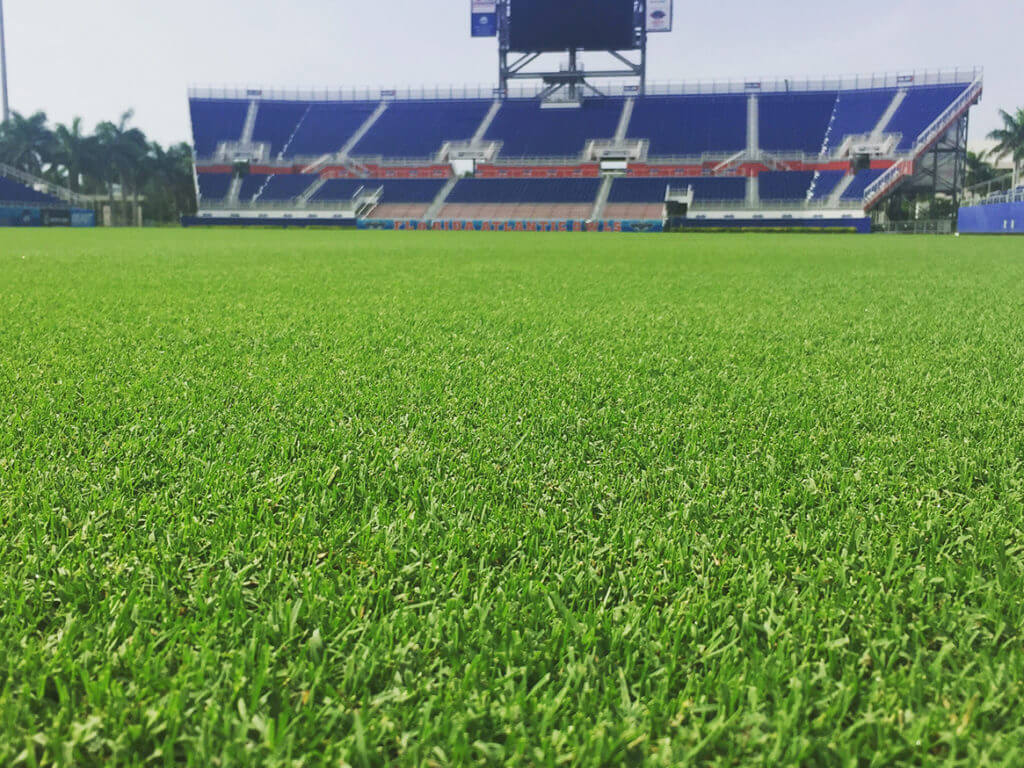There are over 12,000 different grass species but there are only a select few that are used in sports stadiums and venues around the world. Different grasses grow in different climates and require the utmost care, usually all year round. For example, Creeping Bentgrass is cultivated mostly for use on golf courses and must be carefully maintained at all times. This grass is best for cooler conditions and can be mowed to a very short length which is why it is so popular with golf courses.
Although a lot of venues use artificial turf these days, most places still prefer to use the real thing as it is comparatively cheaper and more environmentally friendly to do so.
Here are some more grass species that are used in different sporting venues and why.
Kentucky bluegrass
As a hardy grass, this perennial grass is native to most of Europe and Northern Asia as well as the cooler parts of the United States and Southern Canada. The grass tends to grow quickly and prefers sunlight to shade. It is used in many NFL and MLB stadiums in the northern states including Lambeau Field in Green Bay, Wisconsin, Soldier Field in Chicago, Illinois, as well as Fenway Park in Boston, Massachusetts, Yankee Stadium in Bronx, New York, and PNC Park in Pittsburgh, Pennsylvania. It tends to be either dark blue or emerald green.
Bermuda grass
Another hard grass, Bermuda grass is also popular on golf courses and can survive in harsher conditions compared to the Creeping Bentgrass. This grass, especially Celebration bermuda, is a very tough grass that grows fast and recovers quickly which is why it is perfect for sporting arenas that play harsher games like soccer and football and also places where it is constantly hotter. The grass is native to many parts of Europe, Asia, Australia, and Africa which is why it is so heat and drought tolerant. This is the type of grass that Australia’s Socceroos in the World Cup would feel most at home on, especially if they are using it at stadiums at the 2022 World Cup in Qatar.
Tall fescue
Tall Fescue is widely used in stadiums across the northern parts of the United States due to it being a cool-season perennial grass that is native to the colder climates of Europe. However, it is also one of the best transition zone grasses available. It is a species of bunchgrass that tends to grow in clumps but if it is seeded well, about twice a year, this will create a thicker sod as it has a deep root system, making it highly resistant to drought.
Perennial ryegrass
This robust dark green grass has been widely cultivated around the world for various uses and is native to Southern Europe, Northern Africa, and parts of western Asia. One of the hardiest and most useful grasses on this list, it has been seeded and grown in North America, South America, and Australia, where it has been cultivated successfully and used for the prevention of soil erosion and grazing livestock. It is used for lawns and is once again quite popular for use on golf courses, and multi-sport stadiums as well as tennis courts, most notably the grass courts at Wimbledon. Due to the vigor and easy growth and spread of the grass, it has been considered an invasive plant in certain areas in countries where it has been introduced.

